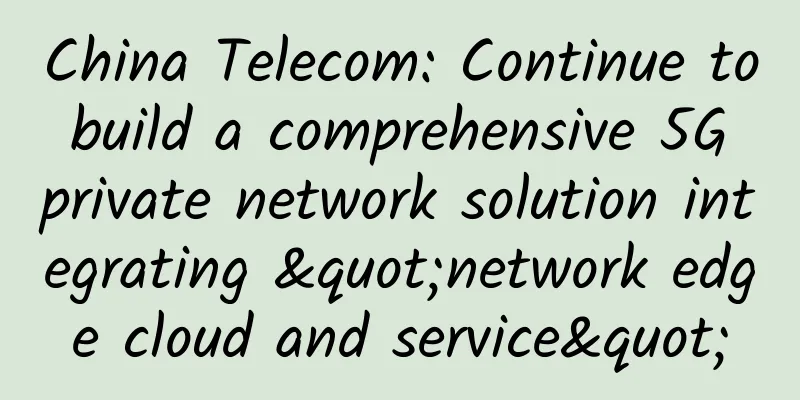How is the world's largest OpenRAN operator doing?

|
On February 14, Japanese operator Rakuten Mobile released its full-year financial report for 2021, revealing a lot of previously undisclosed key information. This star operator once again attracted industry attention. Build the world's largest OpenRAN networkAs wireless engineers who have been paying close attention to base station equipment, the first thing that caught our attention was the picture below. Lotte said that it has currently deployed the world's largest OpenRAN network, with more than 200,000 cells (RU units). The site types include outdoor 4G macro stations, outdoor 4G small stations, indoor 4G small stations and outdoor 5G macro stations, and specifically disclosed the number of deployments of various types of equipment. The operator also stated that its 4G population coverage has reached 96%, four years ahead of schedule, achieving the target set by the Ministry of Internal Affairs and Communications, but refused to disclose its 5G population coverage. Comparing the above data, Rakuten Mobile has deployed approximately 90,000 4G outdoor macro cells and only 7,420 5G outdoor macro cells. It can be seen that although its 4G network has been basically built, the construction speed of the 5G network is very slow. It is not difficult to understand why the 5G population coverage rate is not disclosed. Record lossesThe financial report shows that since 2019, Lotte Group's sales revenue has been rising year by year, reaching 1.682 trillion yen in 2021, a year-on-year increase of 15.5%. However, profits continued to decline, and in 2021 the company suffered its largest loss in history, with an annual loss of 225 billion yen. Judging from the financial report data, the performance of Lotte Group's e-commerce, financial technology and other business segments have performed well, but its mobile business (Lotte Mobile) has seriously lagged behind, which is the reason for the group's continued losses. Due to continued investment in mobile networks and base stations, as well as high roaming costs (some areas rent KDDI networks), Rakuten Mobile's losses have continued to expand since 2019, reaching a new high in 2021 with a full-year loss of 421.1 billion yen. The financial report also revealed that since Q1 2018, Rakuten Mobile's fixed asset investment in the mobile network field has exceeded 1 trillion yen. I remember that Rakuten Mobile once said that its single-site investment cost based on the OpenRAN architecture is 40% lower than that of traditional operators. Based on the above investment amount and the scale of the built network, it seems that it is not as cost-effective as claimed. The 1 trillion yen investment also exceeded Rakuten Mobile's expectations. I remember that when Rakuten announced its entry into mobile operators in 2019, it stated that it would raise approximately 600 billion yen to build a nationwide LTE network by 2025, of which 300 billion yen would be invested in outdoor base stations, 80 billion in indoor base stations, and 220.4 billion in core networks, transmission networks, and later expansion. At that time, the industry generally believed that the investment was "too little", which was only the annual investment of NTT DoCoMo. However, Rakuten believed that due to its limited spectrum resources (only 20MHz), small number of users, and a pure LTE network (no 3G services), "600 billion yen is enough to build a nationwide network." It seems that they were too "naive" back then. Slow user growthAs a new operator, Rakuten Mobile has always adopted an ultra-low price strategy. However, Japanese consumers do not seem willing to pay for the low prices. The financial report shows that the number of Rakuten Mobile users has maintained steady growth since April 2020. As of February 2022, the total number of Rakuten Mobile users (including MNO and MVNO contracts) has exceeded 5.5 million. Despite the "steady growth", if we compare the market share of Japanese mobile operators, NTT DoCoMo has about 84 million mobile users, au has about 61 million, and SoftBank has about 48 million. Obviously, although Rakuten Mobile is disruptive enough in terms of network, it does not pose much threat to traditional operators in terms of market size. Some analysts said that in order for Rakuten Mobile to achieve a break-even, it needs to develop a user base of at least 20 million. From 5 million to 20 million, at the current user development speed, Rakuten Mobile still has a long way to go. |
<<: From 0G to 5G, the ups and downs of mobile communications over the past century
>>: Slow Internet speed, poor WIFI signal? This is how you can operate your router
Recommend
How do the three major operators promote cloud-network integration?
In recent years, with the rapid development of cl...
When the 2G/3G network is down, will your IoT work properly?
Over the past few years, we’ve seen a lot of head...
What is the handshake process like when connecting to a host whose IP does not exist?
[[410045]] This article is reprinted from the WeC...
What exactly is a socket? Do you want to know?
I believe that everyone was like me when they fir...
5G and IoT: Compatible with each other
5G is here! It’s hard to ignore the hype surround...
HostYun: Hong Kong CN2 GIA line Tsuen Wan data center AMD high-performance VPS monthly payment starting from 19.8 yuan
HostYun has added a new VPS product in Hong Kong&...
I strongly oppose passing data between services through cache!
[[408610]] The movement of data requires a carrie...
Why is China's 5G commercialization going astray?
"The 5G race is a race that the United State...
Metaverse: What are the four pillars?
As a new paradigm of industrial Internet, the Met...
HostKvm adds Australian VPS, 40% off 2G memory package starting from $4.2/month
HostKvm has launched a new data center: Australia...
5G messaging is about to be launched in the commercial use countdown
5G messaging is regarded as a major business inno...
Google acquires the developer of Job Simulator and plans to develop VR content
Today, Google announced that it has acquired Owlc...
Research shows that global 5G network infrastructure revenue will grow 39% in 2021
Gartner predicts that global 5G network infrastru...
Interviewer: Tell me how Nginx handles requests? Why doesn't Nginx use a multi-threaded model? What are the Nginx load balancing algorithms? What are forward and reverse proxies?
Interviewer: Can you tell me how Nginx handles re...
The difference between single-mode fiber and multi-mode fiber and how to choose
1. What are single-mode and multi-mode optical fi...

![[6.18] DediPath: $30/month-E3-1240v2, 16GB memory, 2TB hard disk, 1Gbps unlimited traffic/Los Angeles data center](/upload/images/67cabe6780a9e.webp)







